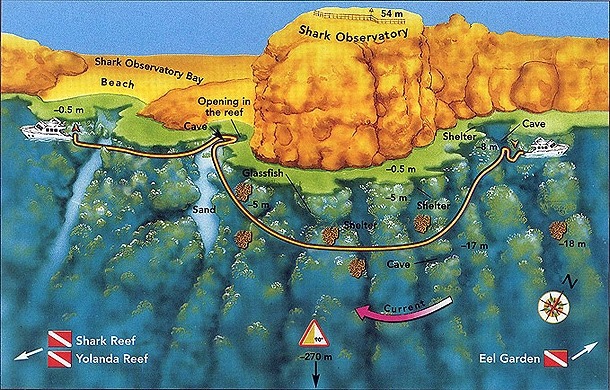SHARK OBSERVATORY

Despite the name, Shark Observatory is not famous for shark’s encounters. Sheer coastal cliffs with observation point at the top continue with vertical coral walls under the water. The wall goes down into the blue abyss. The upper part of the wall is covered with a variety of soft corals and fiery red anthias dancing in the currents.
Great schools of jackfish often rush along the wall. Sometimes you can see a sword fish.
The wall is broken by vertical clefts. Large groupers and colonies of glassfish always stay in numerous caverns.
The best time to dive on the wall of the Shark Observatory is early in the morning, when the wall is sun lit. However, the afternoon dive is also good. At this time of day, the wall is in the shadow of coastal cliffs. The site becomes gloomy and mysterious, and the rays of the sun break through narrow crevices in the reef.
The direction of the dive is dictated by the current.
|

 Diving in Sharm el-Sheikh
Diving in Sharm el-Sheikh